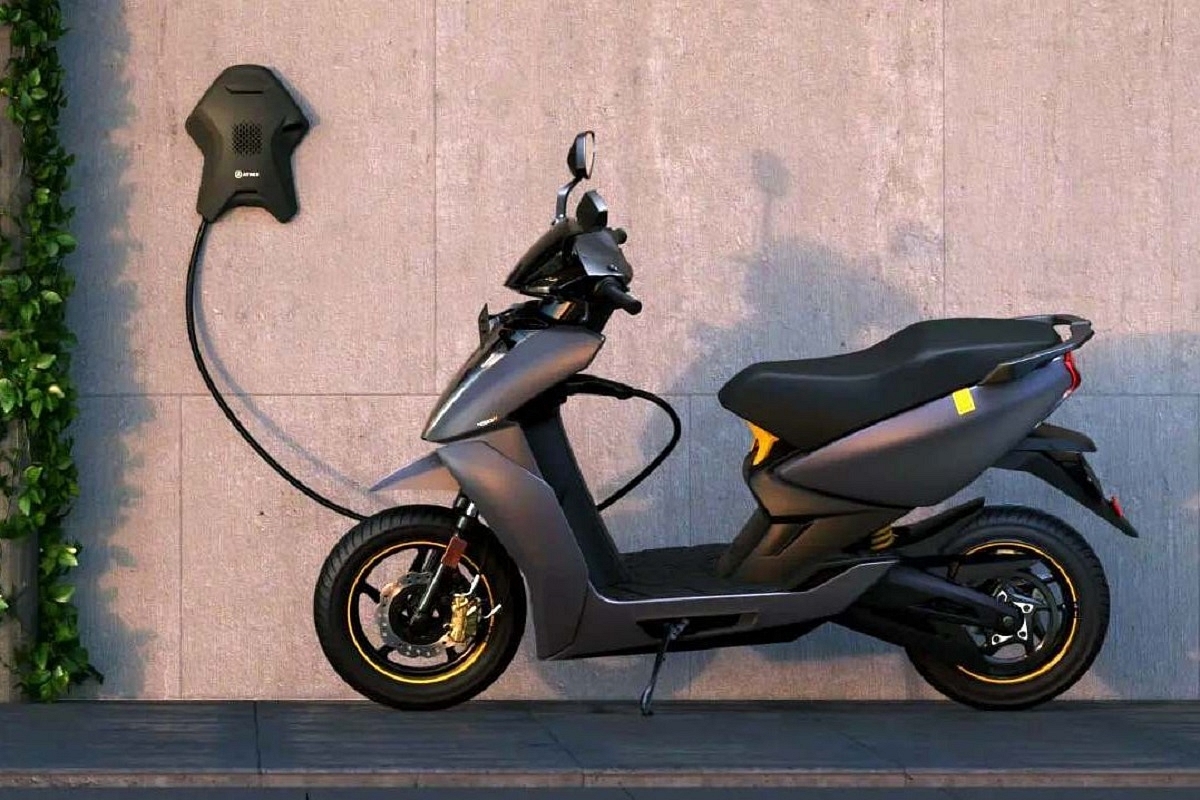Context
100 Per Cent Electric Two-Wheeler Penetration In India By FY27, NITI Aayog Report Forecasts

Representative Image
A report by NITI Aayog and TIFAC has made a rather optimistic forecast for two-wheeler EV presence in India in the near-future.
No less than 100 per cent penetration of electric two-wheelers in the Indian market by FY 2026-27 is forecast.
The report provides important insights into the required infrastructure, manufacturing capability, policies, and technology development priorities in the area.
“This report provides a much-needed tool to the industry, researchers, academicians, and policymakers to analyze and respond to various scenarios. It can be replicated easily in other segments too, such as four-wheelers, without any hassle,” NITI Aayog CEO Amitabh Kant said.
The report follows on the heels of Union Road Transport and Highways Minister Nitin Gadkari's assurance that there will be more electric vehicles than conventional ones in India by 2050.
Future projections: The sale of electric two-wheelers may cross 220 lakh units in FY 2028–29 under the ‘Optimistic’, ‘Same Performance’, and ‘Battery Cost Challenged’ scenarios. And it may reach 180 lakh units under the ‘Technology Driven’ scenario.
If an R&D programme manages to enhance the range and power of electric two-wheelers by 5 per cent annually between FY 2023–24 and 2025–26, and by 10 per cent in FY 2026–2027, then electric-two wheeler penetration may reach about 72 per cent by FY 2031–32 — even with no extension of demand incentives.
EVs on the rise: "There is a positive mindset about electric mobility among the consumers and the recent rise in the price of petroleum fuels has played a major role towards this shift," the report said.
Over 966,363 electric vehicles were on the roads across the country, as on 11 February.
Most EVs were in UP (276,217), followed by Delhi (132,302), Karnataka (82,046), Bihar (64,241), Maharashtra (58,815), Rajasthan (53,141), and Tamil Nadu (50,296).
The scrapping of old fuel-based vehicles and the availability of new eco-friendly vehicles is prompting consumers to make the switch.
State support has been important in creating a manufacturer-friendly environment.
The government has been stimulating innovation on batteries, which is the key EV component making up at least 50 per cent of the upfront cost.
They are tracking alternatives for lithium-ion batteries such as zinc-ion, sodium-ion and also aluminum-ion batteries.
The government launched the 'Faster Adoption and Manufacturing of (Hybrid and) Electric Vehicles in India' (FAME India) scheme in 2015 on a pan-India basis.
Presently, Phase-II of the FAME India scheme is being implemented for a period of five years with effect from 1 April 2019 with a total budgetary support of Rs 10,000 crore.
To promote adoption of EVs, the government approved a PLI scheme for manufacturing of Advanced Chemistry Cell (ACC) to bring down battery prices in the country, which will result in cost reduction of EVs.
Further, EVs are covered under the PLI scheme for Automobile and Auto Components, which was approved on 15 September 2021 with a budgetary outlay of Rs 25,938 crore for a period of five years.
Meanwhile, the GST on EVs has been reduced from 12 per cent to 5 per cent; plus, the GST on chargers and charging stations for EVs has been reduced from 18 per cent to 5 per cent.
Basis for scenarios: Three major factors and four constraint levels have been identified in the report to construct the future scenarios.
Three major factors that influence the market penetration of electric two-wheelers — (i) demand incentives (ii) cost of the battery (iii) vehicle performance in terms of both range and power.
Four broad constraint levels, in terms of installed vehicle manufacturing capacity and available charging infrastructure — (i) full constraint (where both vehicle production and charging infrastructure are constraints) (ii) production constraint (where only vehicle production is a constraint) (iii) charge constraint (where only the charging infrastructure is a constraint) (iv) no constraint.
Summing it up: India is at a crossroads and a shift to electric mobility, particularly in the two-wheeler segment, may happen faster than anticipated, provided R&D continues to be emphasised and the government consistently handholds the sector, the report said.
Support Swarajya's 50 Ground Reports Project & Sponsor A Story
Every general election Swarajya does a 50 ground reports project.
Aimed only at serious readers and those who appreciate the nuances of political undercurrents, the project provides a sense of India's electoral landscape. As you know, these reports are produced after considerable investment of travel, time and effort on the ground.
This time too we've kicked off the project in style and have covered over 30 constituencies already. If you're someone who appreciates such work and have enjoyed our coverage please consider sponsoring a ground report for just Rs 2999 to Rs 19,999 - it goes a long way in helping us produce more quality reportage.
You can also back this project by becoming a subscriber for as little as Rs 999 - so do click on this links and choose a plan that suits you and back us.
Click below to contribute.
Latest